Break more clay targets and get higher scores, what shooter wouldn’t want to achieve this important goal?
But it’s not easy, because to achieve these results each shooter must improve their shooting technique or correct the small errors that limit their potential.
In these cases, it is necessary to ask for help from an instructor, who will make sure that our basic techniques is correct and give us valuable advice to improve it.
In addition to the help of an instructor, however, we can also accelerate our improvement by training and working alone.
In this article, we will look at some excellent tips and tricks to do it.
- Pay attention to the preparation phase to hit the clay pigeon
- Do not aim but point the shotgun at the target
- Improve your shotgun mount technique
- Never lift your head from the shotgun
- Change the stock of your shotgun
- Turn your weaknesses into strengths
- Practice, practice and practice some more
The objective? Break more clay pigeons and feel more satisfied after each training session or competition at the shooting range.
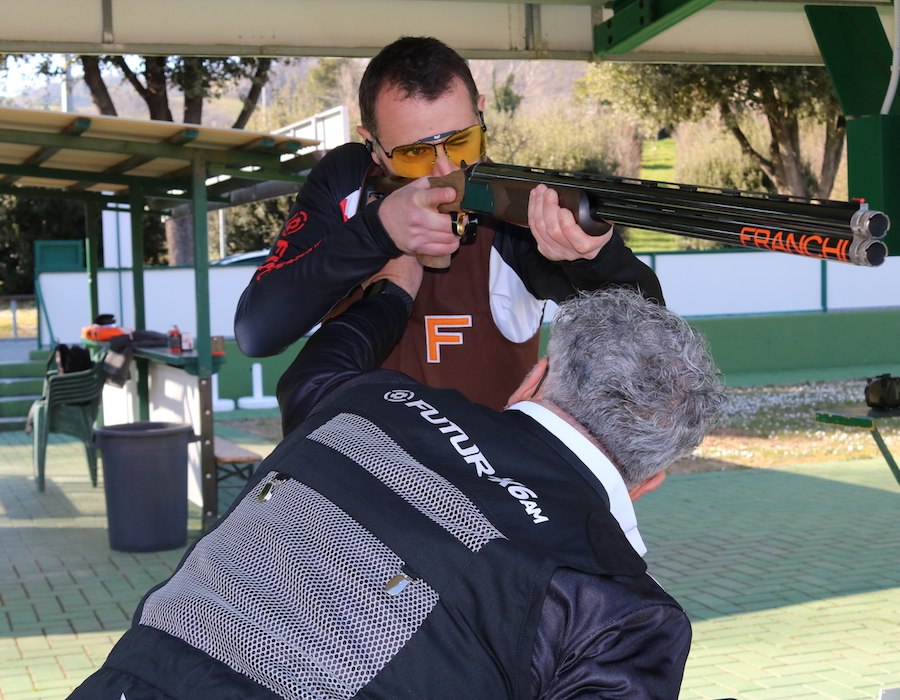
1. Pay close attention to the preparation phase to hit the clay pigeon well
Many shooters seem like they are literally in a hurry to mount their shotgun and scream “pull”. In these cases, you can often consider it a miss before the shot even begins!
In reality, we start breaking the clay pigeon from the moment we pick up the shotgun and we prepare to call it, it is a movement that must be done carefully, fluidly and above all in an almost automated way.
All the best shooters follow routines made of precise movements before calling the clay targets. These drills help them to stay focused and be sure to always prepare their shotgun the same way, avoiding errors and inaccuracies as much as possible.
When possible, it is useful to aim the barrel at the breakpoint during the preparation phase, i.e., where you imagine that you will intercept the clay pigeon. Imagine seeing it break and then simply move back and focus on all of your movements.
It is not always possible to use this technique.
For example, in Trap, we will never know the exact point from which the clay target will take off. However, in these cases, if you hold the shotgun correctly and feel ready to call the clay pigeon, your reaction time will be significantly reduced.
2. Do not aim but point the shotgun at the target
Many shooters make mistakes because they insist on “aiming too much”: it is natural for any person to focus on the target rather than on correctly pointing the gun.
The shooting technique with the typical shotgun barrel is completely different from the rifled barrels. The reason is that the latter shoot only one projectile, so accurately aiming for the target is essential.
In clay pigeon shooting, we rely on the spread of our cartridges. This means that we should not aim for a specific point but rather be sure that the target is hit by a sufficient number of pellets to cause it to break, at least 5-6.
Therefore, we must limit ourselves to aiming the shotgun at the clay target, then our correct shooting position and the right shot advance will do the rest of the work.
The desire to aim at the clay pigeon at all costs worsens and does not make the rotation of the gun fluid to follow the most angled targets. In fact, whenever we focus on our gun or the target too much, the latter will stop, thus risking an incorrect advance of the shot.
It is no coincidence that many professional shooters remove or resize the gunsight and the ribs of their shotguns so that the targeting systems do not distract them too much from instinctively aiming the shotgun at the clay target.
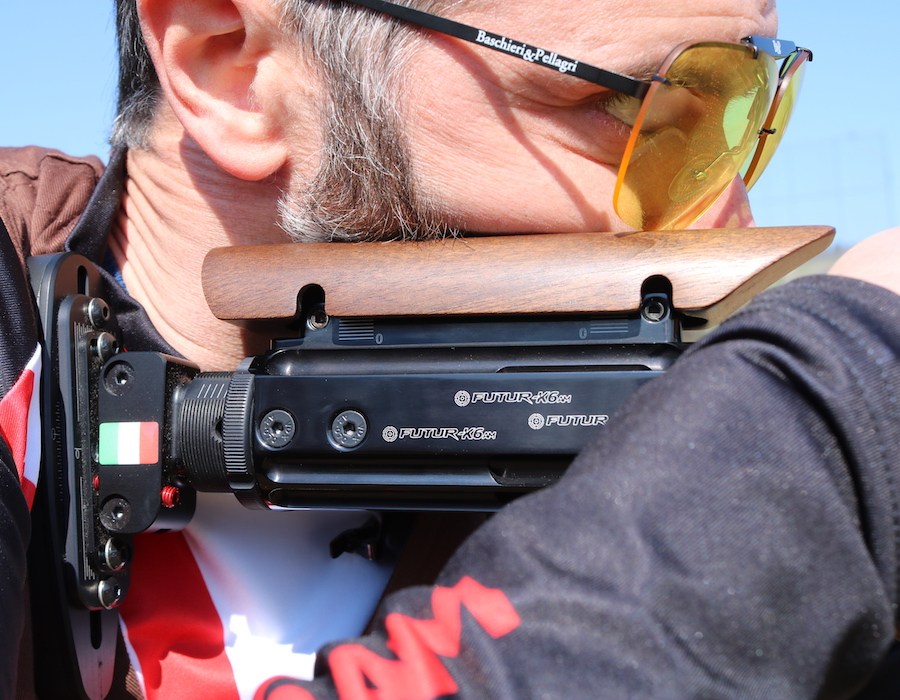
3. Improve your shotgun mount technique
This is a critical phase that is often overlooked by many shooters because they prefer to focus only on what happens after calling the clay pigeon. As a result, the most nonsense reasons emerge: “I made a mistake beforehand”, “the cartridges aren’t working”, “I hit it, but it didn’t break”, we could go on for hours.
In reality, if we realise that the errors are too frequent or always the same, the root of the problem could lie in our shotgun technique.
Picking up the shotgun incorrectly means that our shooting position will not be correct and above all, even if we seem to have perfectly aligned the gun to the clay target, preparing in advance, we will see it fly by unscathed.
An external observer immediately notices this type of error, especially a shooting instructor.
But how can we improve on our own?
The first and most useful advice is to devote some time to performing the shooting action by training with the gun unloaded and without firing at the target. In this way, we will only focus on correctly performing all the movements and will not have to worry about calling and then shooting the clay target.
Repeating these shooting movements also significantly increases our familiarity with the shotgun, and over time we will perceive it as a natural extension of our body.
Subsequently, when we return to shooting, these movements will be almost automated so we won’t have to devote so much attention and concentration, that can instead be dedicated to other aspects, such as the proper course of our shooting routine or to identify other micro-errors.
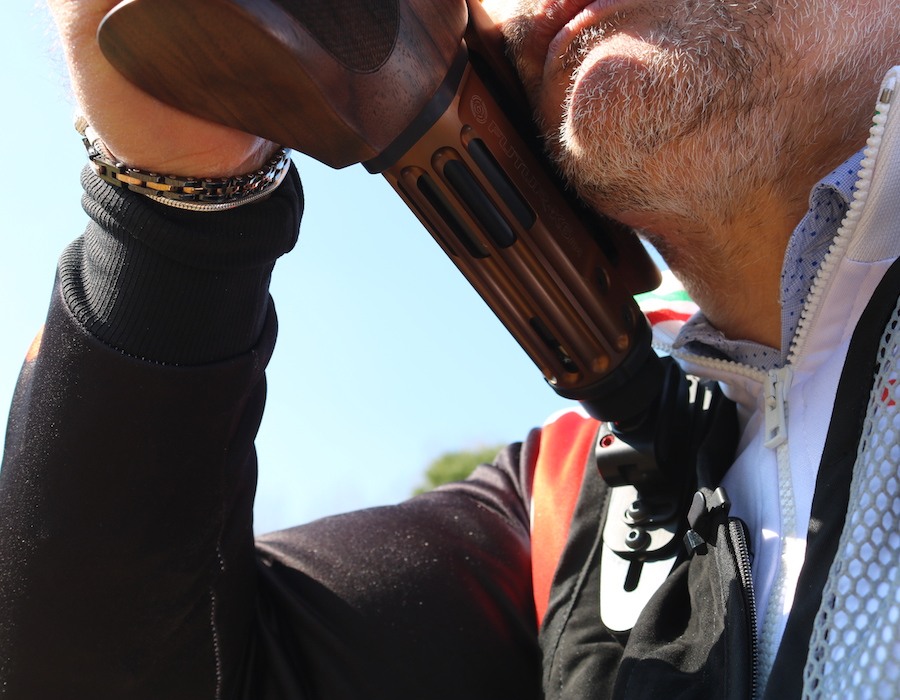
4. Never lift your head from the shotgun
Raising your head from the shotgun before the shot starts means missing the target 99% of the time.
The position of your head and the perfect alignment of your line of sight with that of the shotgun are necessary and essential requisites for breaking clays constantly.
Let’s think about this: when we raise the gun-sights of any gun, smooth or rifled, the shotgun will be calibrated to shoot higher; if you raise your head, the same thing will happen.
But why do we do it?
- The first reason may be due to characteristics of an unsuitable shotgun for our physique. In this case, the problem may be due to the stock.If we fail to have a clear view of the rib, the gunsight and even the target, it is natural that we tend to want (even unconsciously) to raise our head to compensate for this disadvantage. For this reason, it is very important to have a bespoke shotgun that does not compel us to make incorrect movements to compensate for problems with visibility or aiming at the target.Let’s look at a practical example. If our stock has a heel height that is too low, we will never see the target clearly because our vision will be too covered by the rib and the viewfinder, so we will tend to make up for this problem by raising our head.
- The second reason is that we often want to clearly see the target breaking.In fact, if we do everything correctly, there is no need. However, several shooters tend to raise their heads just to make sure they have broken the clay pigeon, the problem is that given the speed of the clays and cartridges, we raise our head fractions of a second before letting go of the shot.
- The third and last reason is due to recoil.We can consider it a natural reaction because knowing that when we pull the trigger, we’ll get the kickback from the shotgun, so we get ready for the impact and tend to move away from the source of pain.In this case, only practice and familiarity with our shotgun can help.The effects of the recoil must be assimilated and incorporated into our shooting technique. It may be helpful to initially switch to cartridges with reduced recoil and then, once accustomed, introduce higher or standard weights.
Another equally valid solution is to consider purchasing particular stocks for shock-absorbing shotguns like the Futur-K6AM. It is the only stock that exists today with a system for the absorption of the recoil that is completely adjustable by the shooter.
5. Change the stock of your shotgun
Many shooters are constantly looking for the perfect stock for their shotgun.
The reason, also based on what has been said previously, is clear—having a shotgun that completely adapts to our body and physiognomy is a fundamental and necessary prerequisite for breaking more clay pigeons.
If you are starting out or do not have the experience to decide for yourself how to change your stock, the first thing you need to do is make sure you have acquired a good level of repetitiveness and automation with your current shooting technique.
It is, in fact, absolutely not advisable to modify your shotgun and above all to start modifying your stock if your shooting technique is not solid enough and correct.
If you are sure enough that your stock needs to be adjusted or modified, here is how you should proceed.
- Ask the opinion of a qualified instructorAn expert observer who can stand at your side or behind you is a very important contribution to help you understand if the problem is really the stock of your shotgun.Do not limit yourself to the actual shooting phase, repeat several tests of bracing and the engagement of clay targets without loading the gun and firing at the target. In fact, many shooters behave differently in these types of training.
- Shoot at least 10 series of targets and different types of releasesOften the problems observed by shooters and erroneously imputed to the stock are due to particular types of shots or throwing patterns, especially at the beginning.Increasing the intensity of your training before deciding to change stocks and above all try different types of releases, will help you better understand what changes should be made and especially if the problems you are looking at are due to other factors.
- Consider buying an adjustable shotgun stockYes, it is true that several professional shooters have made-to-measure wooden stocks, but do not think that these are not continually adapted by stock experts based on the advice and indications of the shooters themselves.Doing it as a passion could become economincally unsustainable. For this reason, the purchase of an adjustable stock is often the winning solution.The first reason is that it allows you to test, validate and compare changes of fixed stocks in a simple but just as accurate way. The help of an instructor or a stock expert will always be needed, but the cost and time required to do so will be significantly lower.Moreover, in case of an incorrect modification, you can always go back to the starting point. So, don’t get frustrated with the efforts you have made so far. On the other hand, once you have modified a fixed stock, going back is pratically impossible.As your experience progesses, an adjustable stock could also be a great way to test which type of fixed stock and which features might be the most suitable for you.
For all these reasons, it is no coincidence that many professional shooters have chosen to rely on an adjustable stock.
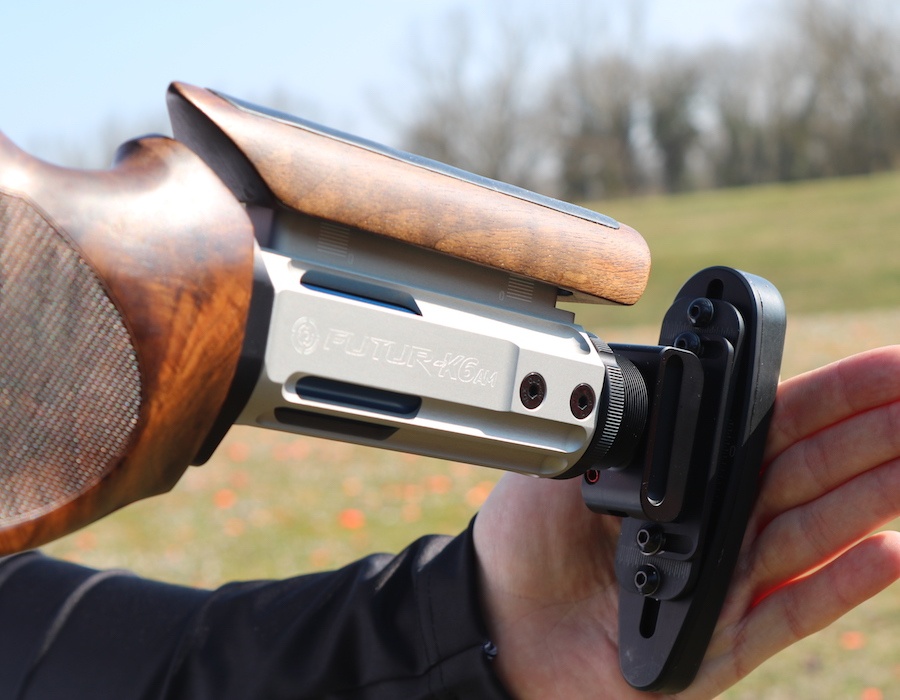
6. Turn your weaknesses into strengths
How many times have you heard this at the shooting field: “that clay always does that”, “I always mess that one up”?
A classic example is the dreaded clay rabbits in Sporting that can follow different trajectories, putting most shooters in crisis.
In these cases, if your shooting technique is correct, there are no fancy or alternative solutions, because the only solution is you.
It could be a fairly important problem if you’re constantly missing a specific type of clay and you can’t figure out what you’re doing wrong. In this situation, there are not many choices; ask for the help of an instructor and not an experienced friend who could give you counterproductive advice.
Sometimes you might notice that the probability of error is consistently higher on a specific type of target. This is not a serious problem as in the previous case, but to get perfect sets, you should not underestimate the situation.
Organise training sessions dedicated to that type or scheme of release, keep track of your scores each session and see if you are improving.
It is important to keep track of improvements for two reasons:
- First, you will know if you are moving in the right direction
- Secondly, you will feed the right stimulus to engage that target
Returning to the example from before, try shooting, for example, two/three hundred difficult clay targets during a session and repeat the exercise in more sessions.
You will notice with the improvement of your scores that the clay pigeon is not really that difficult and you’ll like it more and more.
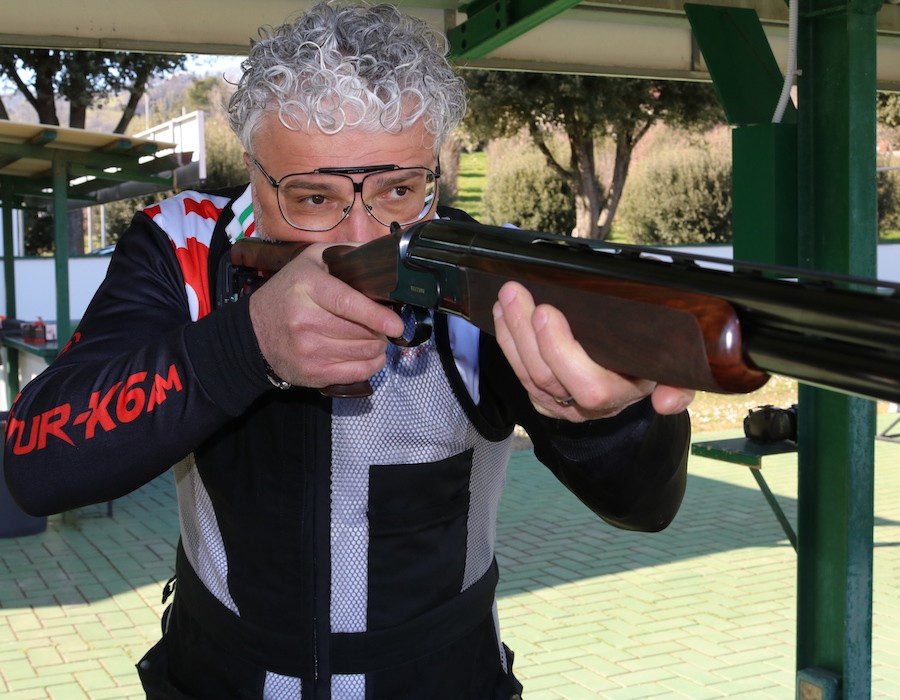
7. Practice, practice and practice some more
As in any other sport what really matters is how you use the time you spend training and especially how you train.
This is why it is important to train by focusing on different types of releases or alternating sessions with the shooting range in training sessions with the gun unloaded and without firing at the target.
Regardless of your level of experience, it is never a bad idea to plan training sessions with shooting instructors before moving on to other types of training or choosing different alternatives for improvement.
In all sports, the best ones train indefinitely, and if you have noticed, they are always followed by coaches and instructors, no matter how good and successful they are. In this way, they are able to solve defects and problems when they arise, or more simply they will come closer and closer to perfection.
To do this, even in your case, practice and a lot of training will be useful; only in this way will you be able to strengthen your shooting technique and make sure that your skills and potential are really increasing.
The number of broken targets will only be a direct consequence!


